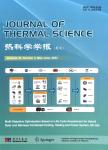Performance Assessment of Air-Cooled Steam Condenser with Guide Vane Cascade
Performance Assessment of Air-Cooled Steam Condenser with Guide Vane Cascade作者机构:School of Energy Power and Mechanical Engineering North China Electric Power University
出 版 物:《Journal of Thermal Science》 (热科学学报(英文版))
年 卷 期:2019年第28卷第5期
页 面:993-1003页
核心收录:
基 金:supported by the National Key Research and Development Program of China (2018YFB0604302-02) the National Natural Science Foundation of China (No.51606066)
主 题:air-cooled steam condenser ambient wind guide vane cascade heat transfer
摘 要:Ambient wind has an unfavourable impact on air-cooled steam condenser(ACSC) performance. A new measure to improve ACSC performance is proposed by setting a diffusion type guide vane cascade beneath the ACSC platform. The numerical models are developed to illustrate the effects of diffusion type guide vane cascade on ACSC performance. The simulation results show that this vane cascade can cause the increases in coolant flows across almost all fans due to its diffusion function and lower flow resistance. Meanwhile, the guide vane cascade also decreases the fan inlet temperatures because of the uniform flow field around the condenser cells. Comparing with the case without guide device, the overall heat transfer efficiency is increased by 11.2% for guide vane cascade case under the condition of 9 m/s. The heat transfer efficiency firstly enhances and then decreases with decreasing stagger angle of guide vane under a certain wind speed. The optimum stagger angle corresponding to the maximum heat transfer efficiency is about 65.5°. The heat transfer efficiency always enhances as increasing vane cascade height, and a vane cascade with 20 m to 30 m height may be suitable to the ACSC as considering the cost.



